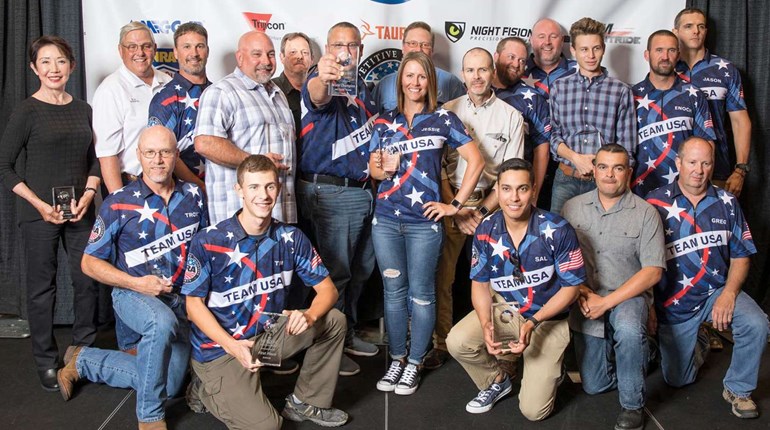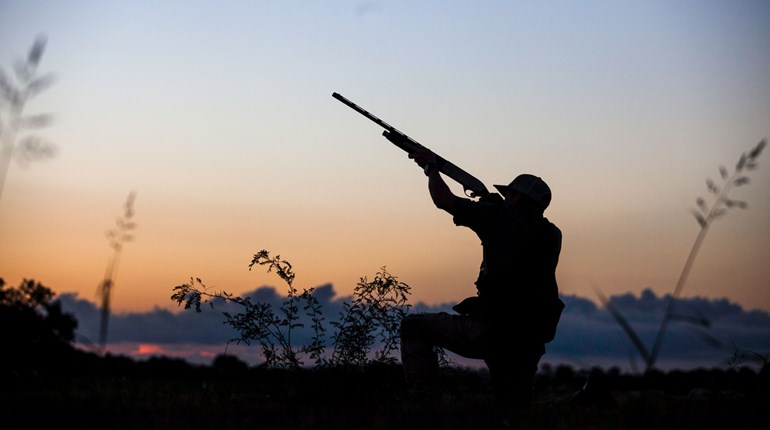
Five hundred feet above the floor of the Dobson Valley hung a layer of clouds, and the peaks of the Ben Ohau Range climbed another 4,500 feet above that. Somewhere on the steep, grassy slopes and jumbled rocks between the two were the tahr. Although the clouds formed a ceiling our binoculars and spotting scopes could not penetrate, Dan Rossiter knew the goat-like animals were up there.
“These hills are normally covered in tahr,” our guide said after a long study through his spotter failed to produce a sighting. “Bloody weather. We could make a stalk up that creek and hope to get close to a bull, but we’ll risk spooking the ones we can’t see.”
Not even a day into our first hunt on New Zealand’s South Island, Neil Davies and I had yet to behold the magnitude of the mountains that rose before us, let alone the majesty of the long-maned tahr bulls we had gone there to find. We’d traveled up the Dobson on a potholed two-track under heavy clouds the entire way, unaware that 90 percent of the landscape was obscured. Dan, however, had hunted and guided for years on the mountains that towered above the glacial valley. The narrow, boulder-strewn drainage on which he had trained his spotting scope ran straight into the clouds and would offer us cover, but he urged us to be patient.
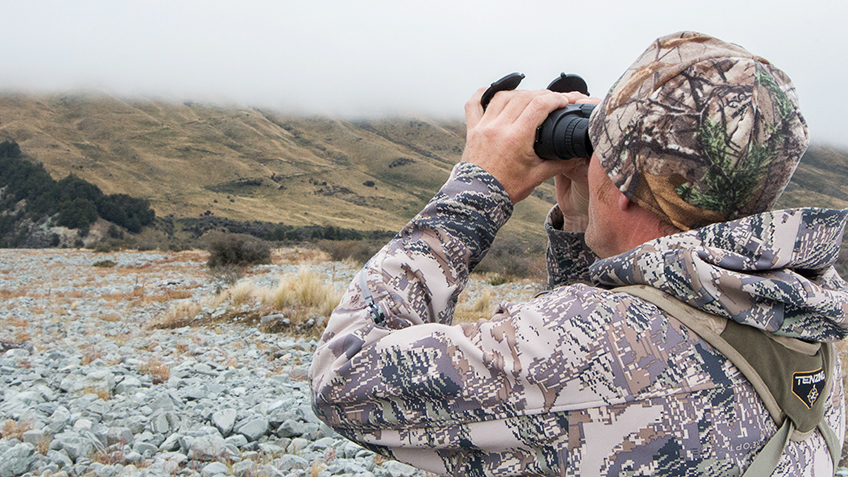
“Much of the time the tahr will be just above the cloud line,” Dan explained. “On a day like this they’ll see us before we see them. It would be a shame to climb up there and run them off.”
Neil and I had spent days in airplanes, passenger vans and pickup trucks to get to this spot, but we’d have to wait a bit longer to get a look at a tahr. We stood beside the Dobson River’s blue-gray braids and scanned the bottom edge of the clouds, wondering if they would lift and what they were hiding from us. How many tahr were in these mountains? How high would we have to climb to find them? Would they be feeding or bedding at this time of day? How could we tell if a tahr was a good bull?
We fired questions at our guide and Steve Couper, a photographer from nearby Queenstown who had joined the hunt. Both had seen, and hunted, plenty of tahr in their lifetimes. They spoke of the animals with innate familiarity and respect borne of passionate pursuit, much like we would talk about whitetails, and it quickly became clear tahr are essential to the South Island’s hunting culture. We learned that while the tahr is a trophy unknown to many American hunters, it is a species of much interest and debate among the Kiwis.
Tahr Wars
Native to northern India, Nepal and Bhutan, where they’re found at elevations as high as 16,000 feet, Himalayan tahr were introduced to the South Island in 1904. Herbrand Arthur Russell, 11th Duke of Bedford and president of the Zoological Society of London, sent six tahr from his herd at Woburn Abbey to New Zealand while it was still a British colony. Only five made the voyage, however, as one bull jumped overboard before the ship landed at Wellington. Two bulls and three cows were released near Mount Cook, New Zealand’s highest mountain in the heart of the Southern Alps. Five years later the Duke sent eight more, and in 1919 four were released from the Wellington Zoo.
The transplants flourished in the Southern Alps, which extend nearly the length of the South Island from northeast to southwest and average 7,000-9,000 feet in elevation. Unlike in the Himalayas, where their forebears were preyed upon by snow leopards, these tahr had no natural predators in their new range. They were off limits to hunting until about 1930, and their population exploded.
The Duke’s goal of establishing a feral population of tahr had succeeded, but it came at some cost to the South Island’s alpine ecosystem. No ungulate is native to New Zealand, and the rising number of tahr found easy pickings on the slopes of the Southern Alps. By the 1960s an estimated 50,000 animals were spread over 2,700 square miles, and their appetite for indigenous grasses and other plants resulted in over-grazing. The New Zealand government labeled the tahr as a pest and called for aggressive control in the form of culling. Market hunting was also encouraged to support a growing demand for tahr meat. Commercial operators used helicopters to access remote areas and to target and recover tahr on the rugged slopes.
In less than two decades tahr numbers fell to a couple thousand animals, and sport hunters—who the Duke had intended to benefit from his introduction—demanded commercial harvesting stop. New Zealand placed a moratorium on it in 1983, although government-funded helicopter culling continued. The tahr population rebounded during the next 10 years, increasing to more than 10,000 animals by biologist estimates and prompting the New Zealand Department of Conservation (DOC) to implement the Himalayan Tahr Control Plan (HTCP) of 1993.
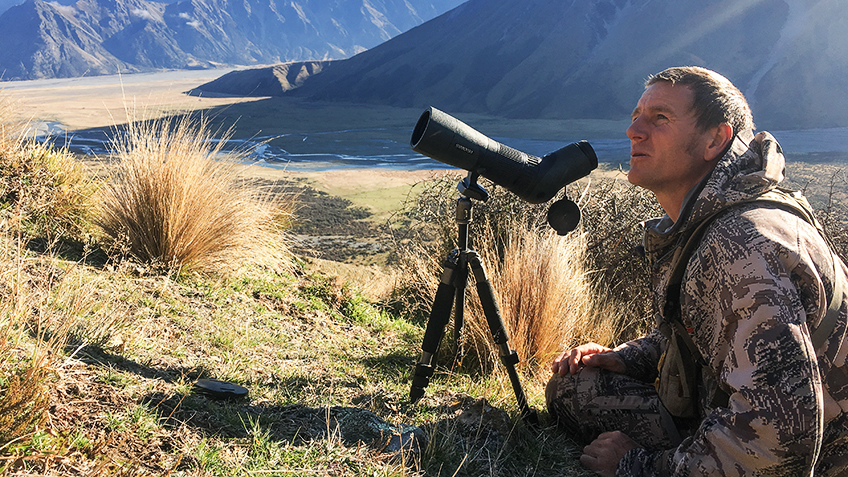
The HTCP, which dictates tahr management on the South Island still today, sets boundaries for what the DOC considers an acceptable tahr “feral range.” Within seven management units constrained to the central part of the South Island, the HTCP recommends the tahr population does not exceed 10,000. The population limit for each management unit ranges from less than 100 animals to 3,000, depending on the unit’s size, terrain and the susceptibility of its vegetation to tahr damage. While recreational hunting is given priority as a management tool in many units, the HTCP prescribes commercial harvest and official control as backups when tahr numbers exceed the plan’s objectives. Outside the feral range are two “exclusion zones,” where the DOC seeks to keep the population at zero through official culling.
The DOC reviews the HTCP annually, and its latest tahr population estimate reached more than 35,000 animals. This caused some government agencies and environmental groups to call for increased control operations, and in September 2018 the DOC proposed the immediate culling of 17,500 tahr on the South Island.
“The control work needs to happen urgently,” said New Zealand Minister of Conservation Eugenie Sage. “There’s a real risk the total population will explode further with another summer breeding season unless control work is done now.”
Kiwi hunters, guides and outfitters, who view tahr as both a natural resource to carefully conserve and a source of income, were outraged. They argued that indiscriminate killing of tahr with no regard to age or sex would leave a dearth of mature bulls, which take years to grow horns of desirable length. Many pointed out that an outfitted hunt for a single trophy bull tahr contributed up to $14,000 to the New Zealand economy.
Hunters also questioned the scientific validity of the population estimate, noting the recently implemented method of monitoring tahr activity in designated vegetation plots scattered across the management units was widely disputed. The DOC based its estimate on this new monitoring data, gathered over an 18-month period, and concluded the tahr population was much higher than expected.
“DOC’s own science they are basing the cull on has been hastily gathered, is statistically borderline and puts the population anywhere between 17,000 and 50,000,” said Greg Duley, spokesman for the New Zealand Tahr Foundation, which reportedly raised more than $100,000 to fight the cull and threatened a court injunction to prevent its start. “The real issue this has highlighted is that there is no science. They have no science to prove that there are too many tahr.”
With the battle heating up, the New Zealand Game Animal Council met with representatives from hunting groups and offered the DOC a counterproposal. The compromise, which the DOC announced in October, called for the culling of 6,000 female tahr by commercial operations and government control. Hunters would take another 4,000 animals. The plan also stressed the need for more research in order to make better informed decisions on future tahr management.
It seemed as though hunters’ concerns for the South Island’s tahr population were heard again, although the success and widespread acceptance of the compromise remains to be seen. Hunters question the cost-effectiveness of government control methods, which the DOC admitted could cost millions of dollars, and continue to be skeptical of the tahr population estimate.
‘Lion-Goats’ at Last
Until the sun started poking holes in the clouds above the Dobson, we couldn’t tell if there were 10 or 100 tahr on the mountains we planned to hunt. We’d been leaning against Dan’s mud-spattered Hilux and talking tahr for an hour when our guide raised his bino and casually remarked, “There’s a group … six, seven. Left of the creek, just below the clouds. Nannies. Bulls should be above them.”
Soon we spotted a couple dozen tahr spread through the brush and tussock, feeding in small groups a half-mile away. They had probably been there the whole time, and with a commanding view of the slopes below would have busted us had we tried to approach earlier.
It didn’t surprise us that Dan had made the right call, but Neil and I couldn’t help but be amazed when we finally got a look at a mature bull tahr. With the sun shining brightly on a flowing, blonde mane that covered half its body, the animal looked proud and regal, even a bit imposing, as it postured atop a rockslide. The bull’s mane made its 200-pound body appear much heavier, and its dark, pointed head seemed like it was getting swallowed by all that hair.
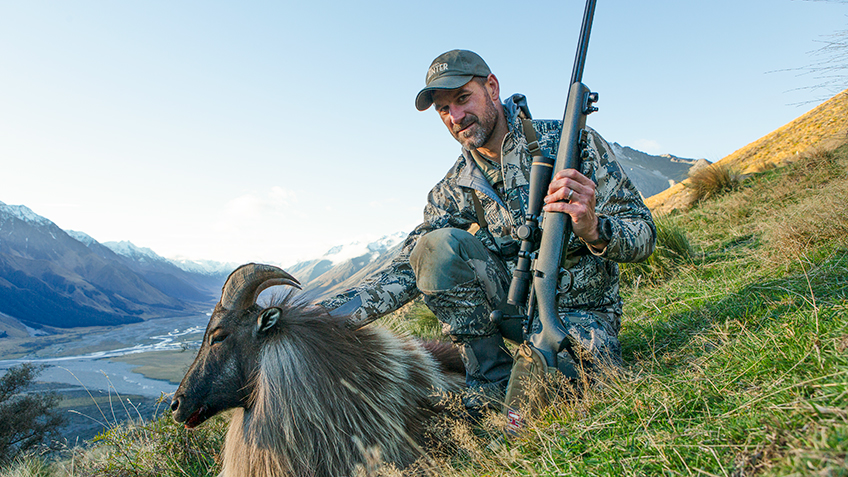
“My wife calls them lion-goats,” I told Neil. “I showed her pictures of them.”
“Lion-goats, ha!” he replied. “I like it. Half lion, half goat.”
Dan explained bull tahr will flare their manes to show dominance during the rut. With it being mid-May—autumn in New Zealand—they were at the height of it.
“I see a few bulls in the scree above the tussock,” Dan reported. “They all look very good but one is probably better than the others. We ought to go have a closer look at them.”
The bulls and the nanny tahr both had horns, but those on the bulls were much thicker and longer. They curled backwards and ended in sharp points. A trophy bull’s horns will measure 8-9 inches in circumference at the base and 11-13 inches long, Dan said, but they can be tricky to judge at distance even with optics. He often looked at the overall size of a bull and the quality of the mane, a prize by itself, as indicators of maturity. The three in the rocks all had magnificent manes, and so we made a plan for a stalk.
We were able to take the truck partway up the slope on a rough grade and remain hidden by a near-vertical face. From there, we hiked out the grade and stopped to take another look. The bulls were still a couple thousand feet above us, but we soon spotted a group of nannies that was closer.
“The nannies feed downhill in the afternoon,” said Dan. “One of those bulls, maybe all of them, will come down, too. Let’s move out this hill and see what happens.”
First we crouched then crawled. Finally we slid on our bellies. None of the going was easy on the steep ground, and I grabbed handfuls of tussock to keep from slipping down the slope. We had almost reached the edge of a rocky gully when Dan noticed another group of nannies 300 yards below us. We could go no farther for fear of spooking them. Turned out we didn’t have to.
The nannies on the slope above us began to wander down the mountain on a path that would put them on our level across the gully. A solitary bull followed a short distance behind, and Dan confirmed the tahr was a shooter. I wrestled the pack off my back and rested my rifle across it. The range to the spine of the ridge on the other side of the gully was 220 yards. If the bull came down that spine, I’d have the perfect opportunity for a shot.
All I had to do was wait—and dig in with my feet to hold my position behind the rifle. Just as my neck was starting to cramp from craning it uphill, the first nanny reached the ridgeline. Soon there were seven or eight more, all feeding calmly. Five minutes later, the bull swaggered onto the ridge, hopping on a rock to survey the situation. A light breeze ruffled his long mane, and I admired his stately pose for a second or two before squeezing the trigger of the Kimber .308.
When I approached the fallen bull, I almost couldn’t believe the length and thickness of his hair. It was luxurious and smelled like herbs; there was none of the rank odor I would expect from a goat. Steve noted the ridges that ran down the front of the bull’s horns were worn smooth, the sign of an older animal that had spent many days above the Dobson. We started to take photos, but Dan interrupted.
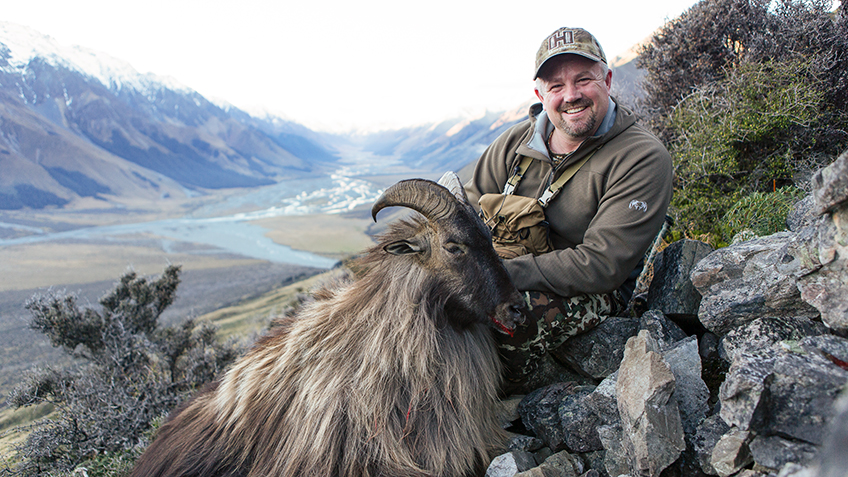
“There’s another very good bull on those rocks above us,” he said. “Almost in range now. I normally wouldn’t want to take two tahr this late, but I don’t think we should pass up this bull. Are you keen for a shot, Neil?”
The bull hadn’t seen us when he was surrounded by the low shrubs growing among the rocks, but as he stepped into the open, he began to get nervous. Neil already had his rifle resting on the back of my tahr like a frontier buffalo hunter. His first shot with the 6.5 PRC caused the bull to stumble, and his second put the tahr down for good from a range of 360 yards.
Kiwi Tradition
We carried our tahr off the mountain as the last light left the valley. After searching for a suitable place to cross the river, which wasn’t exactly a direct route over sandbars in the dark, we took Dan’s truck to a backcountry hut on the opposite bank. The hut had been used for decades by hunters, fishermen and other visitors to Glen Lyon Station, the sheep ranch at the head of the Dobson Valley.
Soon a fire warmed the little shack, and a cast-iron pan set over its flames sputtered with tahr backstrap being seared in butter. We were tired, dirty and a long way from home—but completely comfortable among new friends in the Southern Alps.
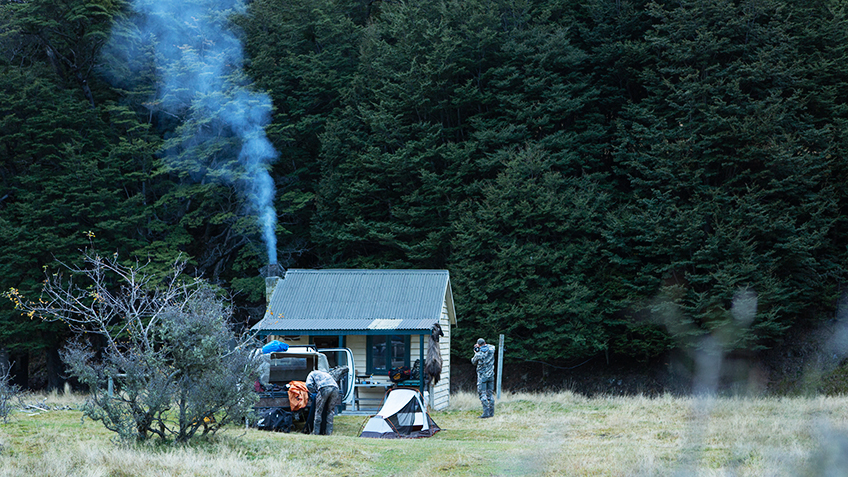
“This is one of my favorite ways to hunt,” said Dan. “You have to work a bit for the tahr here, but at the end of the day you have this to look forward to. Chur, mates.”
We raised our glasses to meet his.
“Here’s to the tahr,” said Neil.
“To the Dobson,” I said.
“To both,” said Steve.
The next morning, with daylight filling the hut and making it easier to see inside, I noticed a few dusty photographs of other successful hunters along with a few handwritten notes highlighting their adventures. They had been there for some time, maybe decades. They were part of the hut’s past and the history of the land surrounding it. Tahr had become a fixture on the South Island, and hunting them had become a tradition. Gazing up into the mountains, I hoped both were there to stay.
South Island Setup
Himalayan tahr is just one species I hunted on New Zealand’s South Island with Glen Dene Hunting & Fishing. Outfitter Richard Burdon also offers guided backcountry hunts for free-range chamois and red stag. His lodge is based on picturesque Lake Hawea and is part of a working sheep station that has been in his family since 1929. For more information, visit glendenehunting.com.
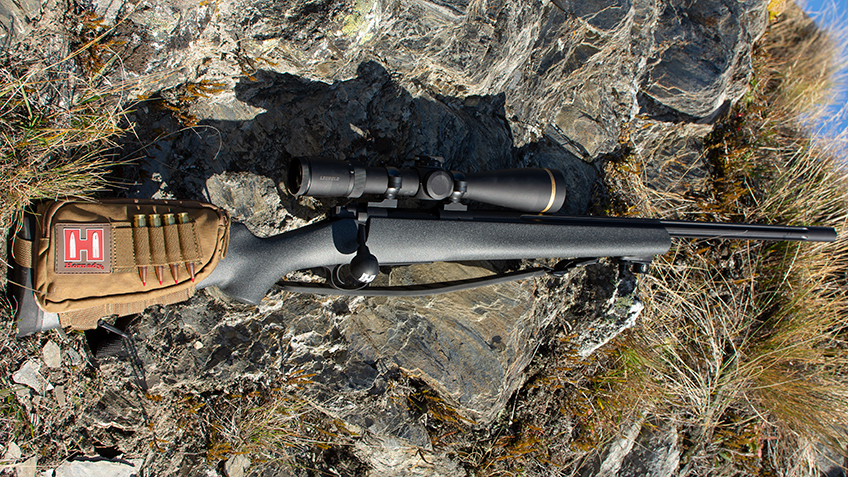
I took a rifle and scope that I was comfortable shooting to 450 yards and carrying for miles. The Kimber Open Country pairs a heavy-contour, fluted barrel with a lightweight stock made from reinforced carbon fiber and weighs a nimble 7 pounds.
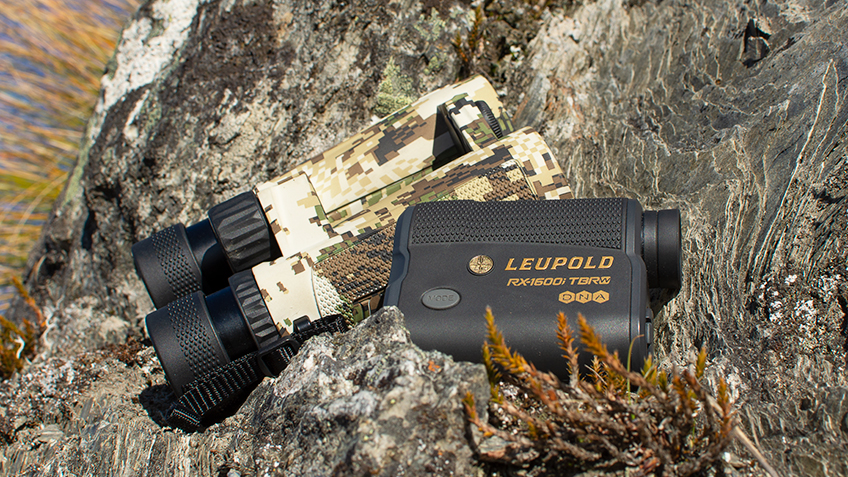
Equipped with a CDS dial for quick elevation adjustments, the 3X-15X-44mm Leupold VX-5HD is a distance-capable scope that isn’t cumbersome in the mountains. The 10x42mm Leupold BX-5 Santiam HD binocular let me see into shadowy pockets in the crags, and the Leupold RX-1600i TBR⁄W rangefinder helped me apply the correct hold on a 47-degree, downhill shot at a chamois. MSRP: Kimber Open Country, $2,269, kimberamerica.com; Leupold VX5-HD 3X-15X-44mm riflescope, $1,234.99, BX-5 Santiam HD 10X42 binocular, $1,559.99, RX-1600i TBR/W rangefinder $437.99, leupold.com.
A cartridge and load that hit hard to anchor game lessens the chance of a wounded animal bounding down an inaccessible slope. I used the .308 Win. Hornady Precision Hunter load with the sleek, controlled-expansion, 178-grain ELD-X bullet and had no worries. MSRP: $40.99 per 20-rnd. box; hornady.com.
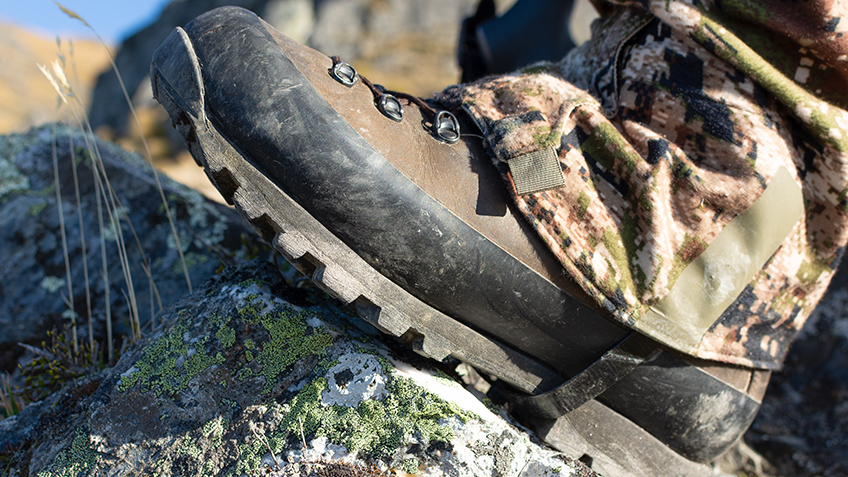
I knew better than to skimp on boots for this hunt, and so I chose the Kenetrek Mountain Extreme 400. The 10-inch leather uppers and reinforced rubber sole guard protected against scrapes from the rocks. Stiff nylon midsoles and aggressive outsoles allowed me to find toeholds in steep terrain. MSRP: $485; kenetrek.com.













